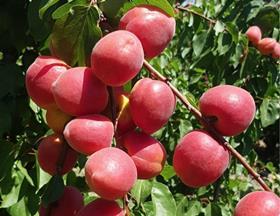
South African stonefruit growers were justified in feeling somewhat disheartened after the completion of the early season, as in general volumes packed for export were down in double digit figures during the early season.
However, now that the mid-season varieties are ripening, their fortunes have changed. It is generally expected that the mid- to late season varieties of the two major categories – plums and nectarines – will be much closer to the forecast.
“In the pre-season we probably saw the effect of last year’s drought,” says Annelie Hauman of Stems.
Jan Hoon of Freshness First, one of the leading plum exporters, says early season plums were disappointing. “We are confident that things will improve from now on till the end of the season.”
Both stress that the South African volumes will be sufficient to service all programmes and that receivers do not have to fear shortages.
According to Hortgro figures the early season plum shipments were 14 per cent down compared to last season, which was also difficult because of the drought.
Main season varieties will be much closer to the mark, only 1 per cent less than last year’s final mid-season shipments. The early season nectarines were 13 per cent down on last year. However, with the improvement expected in the mid and late season total shipments will only be 2 per cent down on last year.
In general terms, and as far as the availability of water in concerns, South African stonefruit growers are in a much better situation than at the same time last year. This is reflected by the improvement in the mid- to late season crops.
Total plum exports are now expected to be 10.1m cartons compared to last year’s 10.24m cartons. Nectarines are expected to end up on 4.1m cartons, compared to last year’s 4.2m cartons.
The third biggest South African stonefruit category, peaches, is expected to be 7 per cent down on last year, with less of an improvement in the mid- to late season compared to plums and nectarines.
Apricots represent a dismal story, with final shipments expected to be 21 per cent down compared to last year. Last year, despite the drought, South Africa exported 723,000 cartons and this is expected to drop to 568,000 cartons this year.
Apricot growers, who are mainly located in the Karoo region, are again suffering from the effects of drought. These regions got very little rains last year and it is reported that in some cases growers have completely run out of water and cannot save some of their orchards.
“We are very positive about the future for South African apricots if only we have sufficient water,” says Annelie Hauman. “There is a big potential for the future if the situation changes in future.”
Exporters say although they are pleased with fruit quality and sizes for the rest of the season, there are no fireworks in the most important markets. Some say oversupply of other categories sold at lower price levels is having an effect on the stability of the market.



